The Sitting Room
The plaster ceiling and doorcases, in the Wyatt style, date from the 1930s, when the 2nd Lord Faringdon made extensive alterations to Buscot, intending to return the house to its original eighteenth-century appearance. The inlaid marble chimney-pieces at either end of the room were introduced at the same time. Both date from the late eighteenth century, and one has always been in the house, though moved from another room.
The room was redecorated in the Autumn of 2008 under the direction of Miss Imogen Taylor with the assistance of Lynette Hood and a new lighting system was installed at the same time in order to enhance the collection of pictures by English artists.
Pictures
The room is mainly hung with portraits, including three by Sir Joshua Reynolds, acquired by the 1st Lord Faringdon in the 1890s. The portrait of Barbara, Countess of Coventry (no.10) is a typical society portrait of 1765. The two sentimental subjects of the Beggar Boy (no.17) and Mercury (no.15), a decade later, show a different, and less usual facet of Reynolds’ character – fanciful rather than austerely classical. Over the chimney-piece, Gainsborough’s monochromatic Cattle Returning along a Wooded Lane (no.16), bought by the 2nd Lord Faringdon in 1935, is thought to be one of a group of pictures sent to the Royal Academy in 1772. Their unusual technique of watercolour and oil paint on paper was described in the catalogue as 'Drawings in imitation of oil painting'.
Furniture and Ceramics
As in the Hall beyond, most of the furniture here is of the Regency period. Either side of the fireplace are the 'Marlborough Commodes' by Mayhew and Ince, one the leading cabinetmakers of the late Georgian period. The commodes were originally owned by the 5th Duke of Marlborough and kept at his Reading house, Whiteknights Park, and may be among the furniture commissioned from Mayhew and Ince for Blenheim Palace in the 1790s.
The two mahogany dwarf bookcases on either side of the north doorway are also English, though in a more openly French style, with gilt-bronze mounts, similar to those seen in the engravings of Percier and Fontaine. Between the windows is a pair of rosewood cabinets with marble tops and gilt monopodia.
The chandelier is a good example of a Regency glass lustre, and the gilt pelmet boards, with elaborate scrolls terminating in eagles’ heads, are of the same period, were moved here from the Drawing Room at Barnsley Park, when John Nash carried out his alterations there between 1807 and 1809.
The large painted vase on the sofa table is Bloor Derby of about 1820; the hexagonal famille rose vases on the dwarf bookcases are Chinese of the Qianlong period (1736–95), while much of the blue and white porcelain here date from the earlier Kangxi reign (1662–1722).
Sculpture and Metalwork
On the mantelpiece, the two nineteenth-century French classical bronzes by Louis Fayon depict David (after Michelangelo) and Antinous (after the antique), between them sits an Austrian 'grande sonnerie' ormolu timepiece. On the right-hand commode is a pair of papier-mache ewers with dome-shaped covers painted with allegorical scenes in Vernis Martin (a type of imitation lacquer), while on the left is a nineteenth-century Neapolitan bronze of the Young Bacchus (originally known as Narcissus), after an Antique bronze excavated at Pompeii in 1862, the last such find to gain celebrity through reproduction.
On the right-hand dwarf bookcase is an ormolu figure of Napoleon as First Consul.
To the right of the door to the hall there is a bronze statuette of the Young Bacchus, by James Macallan Swan, RA. By the left hand door is a bronze head of the present Lady Faringdon, standing on a marble torchère, commissioned in 1996 by the partners of Cazenove & Co., and sculpted by Philomena Davidson-Davis.
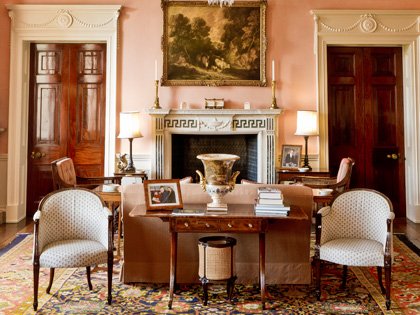
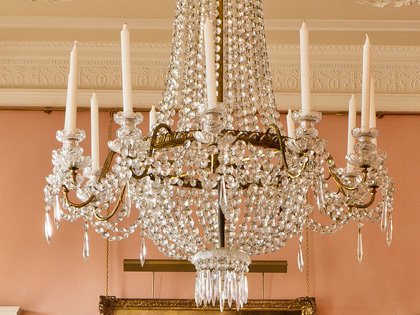
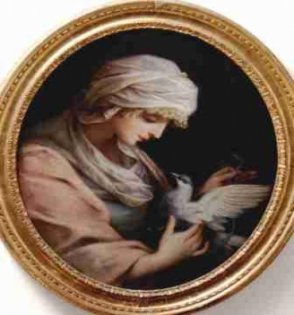
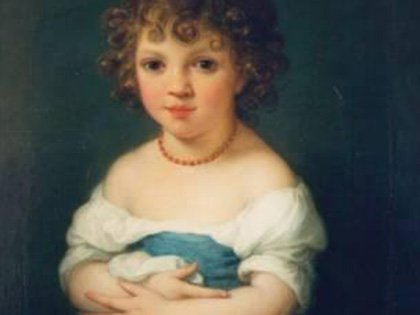
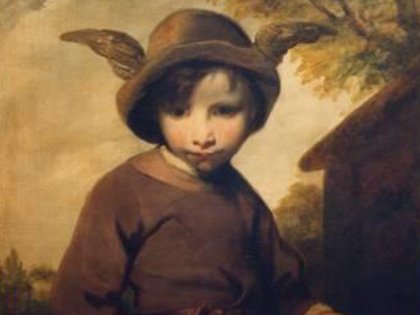
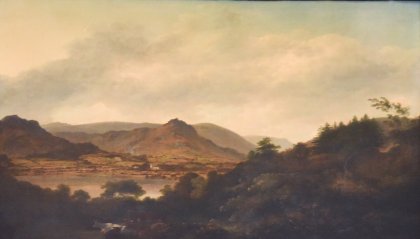
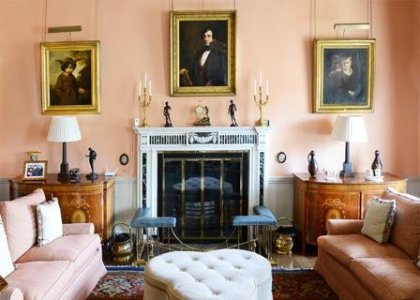







 = House & Grounds Open
= House & Grounds Open = Grounds Open Only
= Grounds Open Only = Closed
= Closed

 >
>